Volume 11, Issue 2
Displaying 1-15 of 15 articles from this issue
- |<
- <
- 1
- >
- >|
-
Article type: Cover
2006Volume 11Issue 2 Pages Cover1-
Published: May 25, 2006
Released on J-STAGE: July 28, 2017
Download PDF (87K) -
Article type: Cover
2006Volume 11Issue 2 Pages Cover2-
Published: May 25, 2006
Released on J-STAGE: July 28, 2017
Download PDF (87K) -
Article type: Appendix
2006Volume 11Issue 2 Pages App1-
Published: May 25, 2006
Released on J-STAGE: July 28, 2017
Download PDF (60K) -
Article type: Appendix
2006Volume 11Issue 2 Pages App2-
Published: May 25, 2006
Released on J-STAGE: July 28, 2017
Download PDF (60K) -
Article type: Appendix
2006Volume 11Issue 2 Pages App3-
Published: May 25, 2006
Released on J-STAGE: July 28, 2017
Download PDF (60K) -
Article type: Article
2006Volume 11Issue 2 Pages 55-67
Published: May 25, 2006
Released on J-STAGE: July 28, 2017
Download PDF (1800K) -
Article type: Article
2006Volume 11Issue 2 Pages 69-74
Published: May 25, 2006
Released on J-STAGE: July 28, 2017
Download PDF (970K) -
Article type: Article
2006Volume 11Issue 2 Pages 75-79
Published: May 25, 2006
Released on J-STAGE: July 28, 2017
Download PDF (667K) -
Article type: Article
2006Volume 11Issue 2 Pages 81-86
Published: May 25, 2006
Released on J-STAGE: July 28, 2017
Download PDF (986K) -
Article type: Article
2006Volume 11Issue 2 Pages 87-91
Published: May 25, 2006
Released on J-STAGE: July 28, 2017
Download PDF (628K) -
Article type: Appendix
2006Volume 11Issue 2 Pages App4-
Published: May 25, 2006
Released on J-STAGE: July 28, 2017
Download PDF (74K) -
Article type: Appendix
2006Volume 11Issue 2 Pages App5-
Published: May 25, 2006
Released on J-STAGE: July 28, 2017
Download PDF (74K) -
Article type: Appendix
2006Volume 11Issue 2 Pages App6-
Published: May 25, 2006
Released on J-STAGE: July 28, 2017
Download PDF (74K) -
Article type: Cover
2006Volume 11Issue 2 Pages Cover3-
Published: May 25, 2006
Released on J-STAGE: July 28, 2017
Download PDF (86K) -
Article type: Cover
2006Volume 11Issue 2 Pages Cover4-
Published: May 25, 2006
Released on J-STAGE: July 28, 2017
Download PDF (86K)
- |<
- <
- 1
- >
- >|
